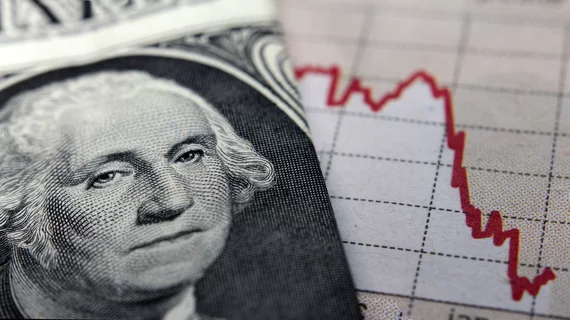S&P places Radiology Partners on CreditWatch, citing ‘rising risk’ of a payment default
S&P Global Ratings recently placed Radiology Partners on CreditWatch with “negative implications,” citing the imaging industry giant’s “rising risk” of a payment default.
The El Segundo, California-based radiology group’s revolving credit line is 80% drawn and coming due in November, analysts noted. About 80% of RP’s remaining debt is due in 2025, and the company has faced liquidity challenges related to reimbursement.
“Given persistent free cash flow deficits primarily stemming from the No Surprises Act and billing disputes with UnitedHealthcare, very high leverage and tight liquidity cushion, we see rising risk of a payment default occurring in 2024, absent an equity injection or very favorable business developments, unless the company addresses approaching debt maturities,” credit analyst Richa Deval and colleagues wrote Dec. 29.
S&P said it is placing all Rad Partners’ ratings on CreditWatch with negative implications. This reflects “heightened downside risk,” analysts noted, given the potential that RP might default on its loans or engage in a distressed exchange in 2024.
Rad Partners continues to spend more than it takes in, despite the company halting any new practice acquisitions and executing cost-saving programs. Deval and colleagues see some potential for the company to negotiate amendments to its outstanding debt.
“If that were to involve lenders getting less than they were originally promised, (i.e., an amendment without adequate compensation) we would likely view that distressed exchange-type transaction as a selective default,” analysts noted. “We expect to resolve the CreditWatch listing within the next few months, or sooner, as we get more clarity on the company's plans to address these approaching maturities,” they added later.
A Rad Partners spokesperson provided a brief statement in response to the ratings action:
"RP continues to perform well with double digit revenue and earnings growth in the third quarter of 2023, and we have strong liquidity to meet our near-term obligations," the statement said. "We remain resolute in our mission to transform radiology, which is evidenced by our clinical accomplishments and continued growth. Consistent with our typical practice, we are evaluating various opportunities to optimize and refinance our capital structure, which we believe will result in positive ratings momentum over time.”
RP is one of the largest imaging groups in the U.S., employing over 3,600 physicians who service 3,260 hospitals and outpatient facilities in all 50 states. Radiologists own about 33% of the company, with private equity firm Whistler Capital, venture capital group New Enterprise Associates and the Australian sovereign wealth Future Fund holding the balance. Moody’s previously downgraded RP’s credit rating in November, citing “very high leverage,” while S&P did the same in June. Amid these challenges, Rad Partners has sought new investors to help pay off more than $2 billion in debt. RP debt holders, meanwhile, have weighed their options with attorneys, Bloomberg reported citing anonymous sources.

